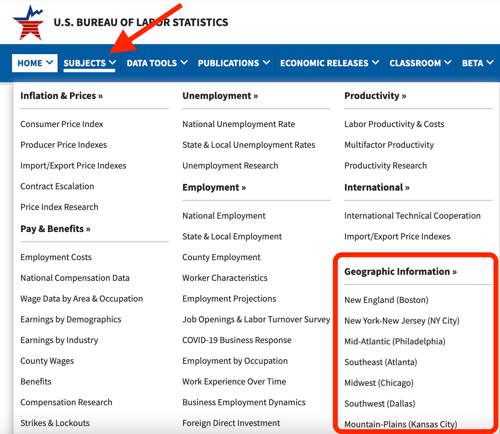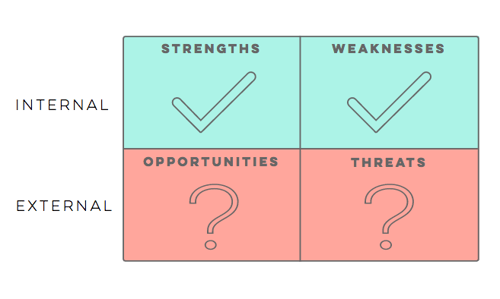In a world where two thirds of sales opportunities are competitive—and those opportunities close at 5x the rate of non-competitive ones—competitive intelligence (CI) is a necessity. Yet most companies aren’t just underperforming—they’re flying blind.
That’s why Crayon’s Jon White, SVP of Product, joined 3Sixty Insights’ GTM Innovators podcast to talk with Kyle James about how AI is changing the CI game forever. This post breaks down Jon’s key takeaways and what your team can do to compete smarter, faster, and with more impact.
Why Competitive Enablement Is Broken (And How AI Can Help Fix It)
Competitive intelligence used to be a manual grind: scanning websites, collecting review site quotes, reading press releases, and trying to translate all that noise into something useful for your reps. This is the era of “old-school compete”—a reactive, disconnected, and outdated model that fails sales reps when they need it most.
“The goal isn’t to just know more about your competitors,” Jon said. “It’s to close more deals by giving your team the right insights at the right time—without overwhelming them in the process.”
This shift is critical. You can have a world-class competitive strategy and still lose if reps aren’t equipped to execute it in the heat of a deal. That’s the gap Crayon has been closing—with AI.
Sparks: AI That Ends Data Overload
One of the biggest innovations driving this transformation? Crayon Sparks—a generative AI tool that helps CI pros and PMMs instantly synthesize thousands of signals across hundreds of data types (G2 reviews, news articles, Gong calls) and then automatically analyze the insights that matter. Sparks also helps teams update and distribute those competitive insights, making sure sales always has the latest intel.
“Teams used to spend hours manually analyzing intel like win/loss notes or summarizing reviews” said Jon. “Now with Sparks, it takes seconds. Literally seconds.”
AI tools and features like Sparks aren’t just a productivity win. It’s a strategic unlock as companies can become more proactive in steering deals in real time.
Beyond Battlecards: Meeting Reps Where They Are
One of Jon’s key points: battlecards are just the beginning. To drive true adoption and win rates, CI content has to be available in the places reps spend their time—Slack, Salesforce, Gong, Teams.
“Sales reps won’t wait around for marketing to craft the perfect answer,” Jon said. “They need to respond in the moment. And now we can give them the tools to do that.”
That’s why Crayon’s multi-channel enablement includes:
- Crayon Answers: A GPT-powered assistant that reps can ask competitive questions in real time, from inside their sales tools.
- Call Clips: AI-surfaced snippets from sales conversations showing how competitors are being positioned and how reps are responding. Crayon's AI will scan your Gong and Chorus (and soon Clari!) call recordings, pinpoint competitive mentions, and generate concise summaries of what happened — highlighting objections, differentiators, and tactics in play.
Looking Ahead: What’s Next for AI in CI?
So what’s next? Jon predicts we’ll see consolidation of tools and simplification of workflows, where reps and CI pros won’t need to juggle 15 different tools—they’ll just ask a question and the system will find the best path to the answer.
Crayon’s roadmap already points in that direction, with Sparks becoming more automated, Crayon Answers embedded deeper into the sales workflow, and richer integrations across the stack.
“This is about empowering humans—not replacing them,” Jon noted. “AI isn’t going to think up your core narrative. But it will give you back the hours you need to do that job well.”
👉 Become an AI-Powered PMM and explore Sparks.

Seeing is believing! Check out Crayon for yourself.
Take a Product TourRelated Blog Posts
Popular Posts
-
 The 8 Free Market Research Tools and Resources You Need to Know
The 8 Free Market Research Tools and Resources You Need to Know
-
 6 Competitive Advantage Examples From the Real World
6 Competitive Advantage Examples From the Real World
-
 How to Create a Competitive Matrix (Step-by-Step Guide With Examples + Free Templates)
How to Create a Competitive Matrix (Step-by-Step Guide With Examples + Free Templates)
-
 24 Questions to Consider for Your Next SWOT Analysis
24 Questions to Consider for Your Next SWOT Analysis
-
 How to Measure Product Launch Success: 12 KPIs You Should Be Tracking
How to Measure Product Launch Success: 12 KPIs You Should Be Tracking
